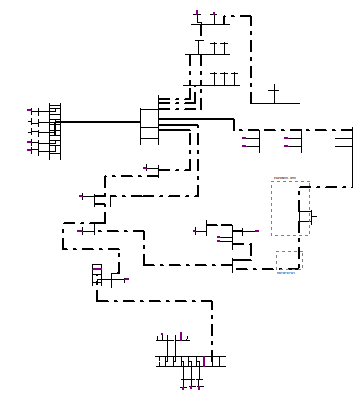
Consulting Stories Part. I
Powersys was contacted by the TSO of an island territory. Because of the small side of their Power System, the presence of several solar plants and the big amount of cables, they have frequent stability problems, above all overvoltages. Several compensation solutions are considered.
So, Powersys performed a reactive power compensation system sizing study to regulate voltages. Moreover, the company wanted to add a BESS (Batteries Energy Storage System) to sustain the possible loss of a generator.
Power System is modelled
To have a Power System model that would be accurate enough to evaluate the regulation devices impact, Powersys took into account in its model the pieces of equipment that have been connected recently.
One of the studies concerned Reactive Power Compensation. Therefore, cable models took into account all aspects of cables model, including susceptance.
To validate the model, the situation at a specific time was reproduced thanks to operation records. Active and Reactive Power consumption were set to indicated recorded values.
The model is validated with a Power flow Analysis. Generators power production and buses voltage that CYME calculated are verified to be close to recorded values.

Various regulation devices are tested using CYME
- Reactive Power compensation
The studied Power System contains many cables, which results in frequent overvoltages. Therefore, customer asked Powersys to mitigate overvoltages by introducing static (reactors banks) and dynamic (SVC or STATCOM) reactive power compensation.
This compensation must allow generators to consume as little Reactive Power as possible. As reactor banks are much cheaper that dynamic regulations devices, it has been requested that reactors banks absorbed as much Reactive Power as possible.
The modeling stage of the reactive power compensation focuses on elements that would affect significantly the reactive power compensation: the cables and the regulation of machines. The model is validated using actual measurements and in particular the reproduction of a real incident. In two scenarios with maximum and minimum power consumption, a load flow analysis is first done. From this point, four events are simulated to check the power system can bear them:
- The loss of a generator
- Two cases of default on a line
- The loss of a mean of compensation
Every electrical characteristic is observed in time-domain to ensure neither voltage nor frequency go out of grid code for too long.
This study confirmed that the reactive power compensation can maintain the voltage level and relieve the generators, which virtually consume no more reactive power (no power factor goes below 0,99).
In every case, we succeeded that SVC Reactive Power absorption remains smaller than a block of a reactor bank. Hence, we succeeded to design the SVC so that it is as small as possible.
- BESS behavior
A BESS has been selected to sustain the loss of one of the biggest generators of the system. The BESS must be able to produce the power of this generator during half an hour, (time to start another generator). The behavior of the BESS is then studied to validate it can do so.
It is also requested to check the BESS can support the case where an important fault causes the loss of half of solar production.
The disconnection of a generator, followed by the activation of the BESS, is simulated. The power system is observed during half an hour. The voltages and the frequency are observed to check for collapse. It corroborates that, after the loss of a generator, the BESS can sustain the transition to the starting up of another generator.
Then, the occurrence of a three-phase grounded fault and its elimination are simulated. The activation of BESS is simulated shortly after. The simulation showed that the fault provoked the disconnection of photovoltaic plants. So, the BESS delivers enough power so that buses voltage remains stable after these events.




